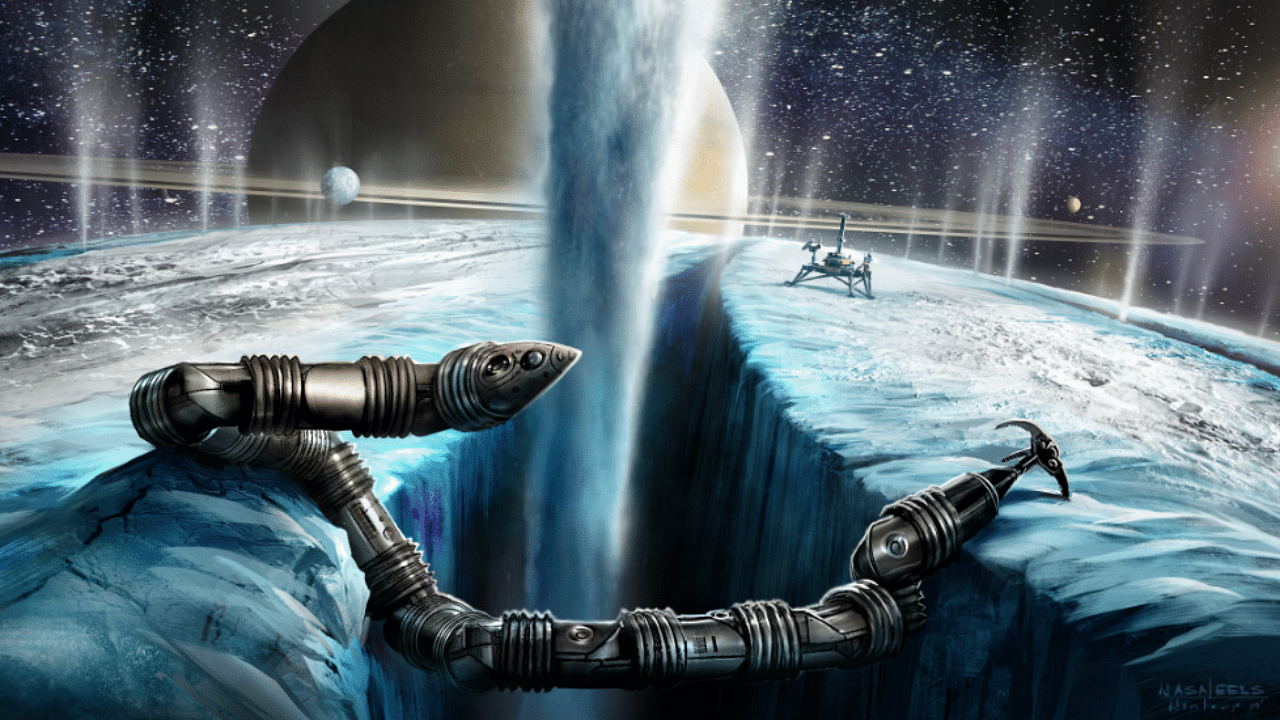
The National Aeronautics and Space Administration (NASA) is onto something out of the world, quite literally. It is currently undertaking the task of developing a snake-like robot which is said to explore internal and enclosed dynamic terrain structures, assess habitability and ultimately search for evidence of life.
The mobile instrument platform named Exobiology Extant Life Surveyor (EELS) is being designed in such a way that it is adaptable to traverse different terrains. The system sheds special focus on one of the moons of Saturn, Enceladus, which was discovered in 1789.
This small icy body has been dubbed as one of the solar system’s ‘most scientifically interesting destination’ by the Cassini spacecraft. Cassini data reveals that Enceladus has a liquid ocean under its icy crust. It is also highly reflecting and has a surface temperature of about -201 degrees Celsius. However, scientists opine that it is not as cold and inactive as thought.
Enceladus will give much headway to NASA in its search for life due to its global ocean and internal heat. The spacecraft has found that geyser-like jets spew water vapour and ice particles from an underground ocean beneath its icy crust.
It is learnt that besides Enceladus, the EELS system is equipped to explore martial polar caps and descending crevasses in the Earth’s ice sheets.
The EELS, driven by power and communication electronics, resembles a snake and should work like a self-propelled robot made of multiple, identical, segments containing both the actuation and propulsion mechanisms.
The system uses rotating propulsion units that act as tracks, gripping mechanisms and propeller units underwater, enabling it to access a plume vent exit and follow it to its ocean source, which makes it helpful in exploring previously unexplored areas.
NASA has also released an illustration of the EELS system.